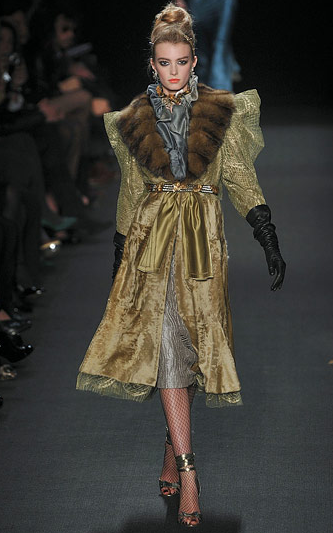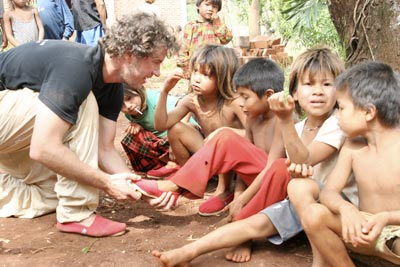
Season two of the popular Bravo television series "The Real Housewives of New York City" is in full swing, and with it, the catfights, the social-climbing, and the controversies are back to entertain us. One of said housewives, Alex McCord (along with her fashionista husband Simon van Kempen) remains determined to invest heavily in her children’s education, starting with raising the toddlers bilingual. To do so, McCord and van Kempen employ a French-speaking au pair (who claims a $30,000 per year salary) and insist that sons Francois and Johan interact with the world strictly
en francais. The question is, will this make a difference in their learning?
Christina Bosemark, founder of the
Multilingual Children's Association, co-founder of the Scandinavian immersion school in San Francisco, and mother of two trilingual daughters, recently wrote an article titled "Raising Bilingual Children: The First Five Steps to Success.” In it, she suggests that previous generations of parents believed the route to raising a polyglot tot was “via an exorbitantly priced Swiss boarding school. Luckily, such elitism has been thrown out the window, and now parents raise multilingual children themselves,” she writes.
Bosemark’s up-to-date solution? "Just talk to them."
Her research suggests that a child needs to be exposed to a language 30% of his or her waking time to actively speak it. Since waking time is a finite quantity, so, too, is language acquisition.
According to Bosemark, one effective learning plan requires one parent to always speak to the child in the foreign language, preferably the parent who spends the most time as the primary speaker. Otherwise, building a bilingual household means investing in an outside (but indoor) source like a bilingual nanny or an au pair. McCord and van Kempen appear to have earned Bosemark’s endorsement.
Immersion, she maintains, is simpler than you’d think. Providing your child books, music, movies, and toys in your minority language are the most obvious ways to boost international exposure. It’s a long-term commitment, Bosemark asserts, but one that will pay off. It’s worked for Madonna and Antonio Banderas, right?
Not so fast.
Bonnie Gray of the Silicon Valley Moms Blog (and owner of luxury shopping cart and high-chair seat cover company
Just Peachy Baby) begs to differ. A first-generation Asian American growing up in Northern California during the 1970s, she
posted about her own experiences juggling multiple languages in the house.
“I was always encouraged to speak and learn English well,” she states. “When I became an adult, it was rare to be asked whether I spoke a second language. Even during the few times I've tried to speak Chinese to some of my overseas born co-workers, they would let me know that they preferred that I speak English with them.”
Gray suggests that without total immersion, the child can get more confused by learning a second language at an early age. She also adds that children can become frustrated, and turned-off, by the prospect of bilingualism if it isn’t integrated holistically (or in her opinion, impractically) into their lives.
“People remind me that being fluent in Chinese would give [my son] a competitive edge in the working world, given our global economy,” she writes. “Some have even told me that my son will grow up and resent me for not teaching it to him when he was young.”
Instead, Gray asserts, try teaching your children about various cultures and ethnicities, so that they might gain some insight and awareness of the world around them. The same immersive tools can be used, from books and movies, to posters and foreign foods.
Both Bosemark and Gray agree that promoting an awareness of other cultures is crucial in a child’s development. And with awareness instilled, language is a logical next step.











